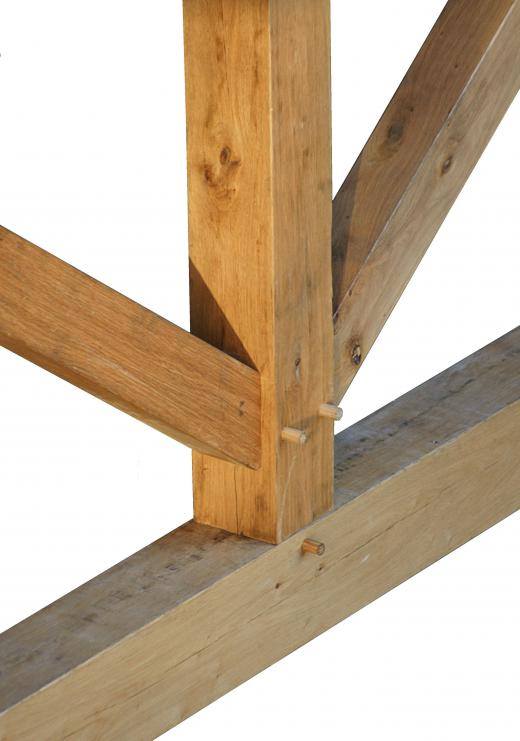A tenon is the male component of a mortise and tenon joint, used to create an extremely strong and durable connection point for many materials. While there are a number of styles, the concept is basically the same: the end part of one material is inserted into a hole in another material. Generally, the tenon is made by narrowing a portion of the rail from which it is cut, creating a “shoulder” which determines how deep it may be inserted into the mortise. After insertion, the tenon may be glued, pinned, or left alone.
There are several different types of tenons that serve a variety of functions. Some styles are used for strength, while others are used as part of the overall design. Common styles include, stub, through, tusk and feather tenons.

A stub, or hidden, tenon is shorter than the width of the material into which it is inserted. This type is used when no evidence of the jointing method is desired. If the stub is tight enough, it can be held in place by friction alone. If not, it can be strengthened with glue or pins.
Through tenons are longer than the width of the material being inserted into, and are visible. The joint can be pinned through the mortise, glued, or left alone. The exposed end can be pinned with a dowel. This type of joint is often seen on hand-crafted furniture.

A tusk, or wedge, tenon uses small wedges to force the end grain of the wood apart, tightening it against the sides of the mortise. This type of joint rarely uses glue or pins. If it passes through the mortise, the wedges can take on a decorative effect.
Feather, or loose, tenons are separate pieces of wood, inserted into mortises cut into both pieces of the material being jointed. These tenons are normally secured with glue or pins. This type of tenon also is a variation on the biscuit joint, which is commonly used in frame construction.
To ensure the strongest possible joint, the tenon should be one-third the thickness of the rail. While shoulders do not have to be cut on all sides, they can help to hide less-than-perfect mortises. Rails are most easily cut using a table saw or a router table, and special drill bits are available for cutting round tenons.
While most common among woodworkers, this type of joinery is also employed by stonemasons, metal workers, and machinists. It is used in everything from furniture making to timber frame construction, and evidence of its use has been discovered in the ruins of ships dating as far back as 4800 BC. The stone lintels at Stonehenge, supported with mortises and tenons, are still standing after 4,500 years. The famed Khufu ship from the Giza pyramid complex, built around 2500 BC, also shows signs of mortise and tenon joinery.
